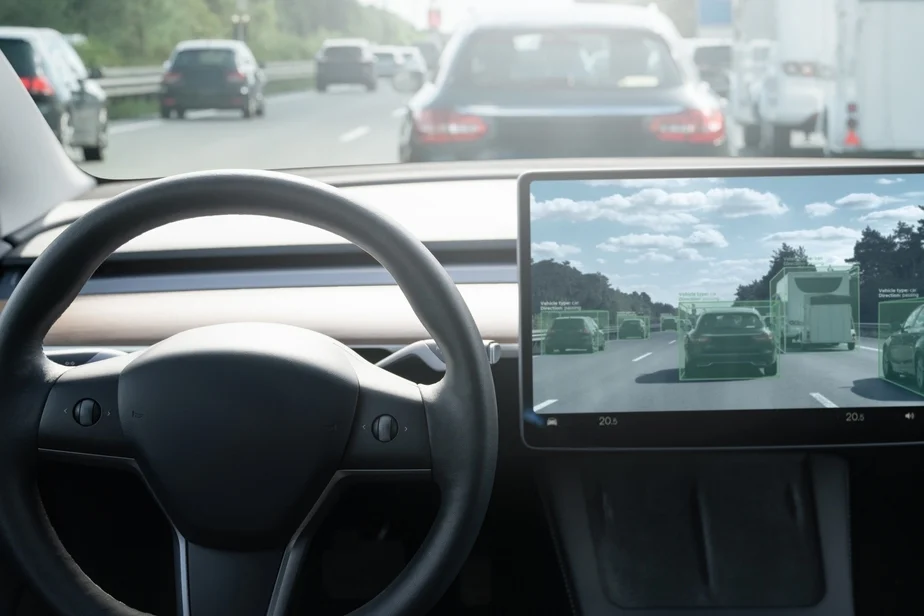
The next decade is expected to be a rocket ship ride for the driverless vehicle market, with total revenues projected to rise from $87.2 billion in 2024 to $991.7 billion by 2033, representing a compound annual growth rate of 4.7%, according to Research & Markets.
“The autonomous vehicle business is being driven ahead by several causes, including public acceptance of AI-driven systems, government laws, environmental concerns, growing traffic congestion, technological developments, and the growing need for safety, efficiency, and convenience,” R & M reports.
Investors looking for an on-ramp may never have a better chance to get into the autonomous vehicle market than right now. Taking a ‘big picture’ approach may be the way to go.
“AV trials are moving aggressively into operational deployment for robotaxis and long-haul trucking,” said Mark Goodstein, CEO at Streetscope, an autonomous vehicle startup in Pasadena, CA. “It is real and quickly advancing.”
Wednesday: Metals Momentum – Trading Silver And Gold Before The Next Breakout
Silver and gold have been on a relentless run, with violent swings creating both risk and opportunity. On Wednesday, September 24, at 6 PM ET, trading veteran Matt Maley goes live to reveal how he’s turning this volatility into outsized wins. If you want a clear metals game plan before the next move, start here. Reserve Your Free Spot
Eager investors may wonder about the risks of investing in a nascent market and weigh the pros and cons of pulling the trigger now or waiting a year. Wondering how to invest is another big issue, with Goodstein advising an expanded approach. “Investing in vehicles is the wrong tactic; investing in companies that are building the ‘full stack’ AV capabilities is a better idea,” Goodstein said.
Another sector speedway is driverless taxis, where the industry growth rate is in high gear.
“The self-driving robotaxi market was about 0.45 billion in 2024,” said Adrian Balfour, founder and chairman of Envorso, a Seattle-based technology industry consulting firm. “The self-driving robotaxi market was about $0.45 billion in 2024. If you look at it going to 2030, estimates range from 73 to 90% CAGR per year. That’s huge, and it’s a massive opportunity.”
One downside of autonomous taxis is compliance.
“The real barrier is going to be city-by-city regulation right now, in cities like San Francisco, Austin, and London,” Balfour said. “Each city is now experimenting with robotaxi-style areas. Suppose you can achieve a federal-level regulation in the same way Uber did. In that case, you move from sort of a pathway of maybe multiple years to go city by city, to getting into a situation where you are going maybe in two or three years to get to a federal level, then that CAGR gets blown out of the water.”
3 Driverless Taxi Stocks To Ride In 2025
As the autonomous vehicle market transitions from testing to commercial use, here are the three stocks that look the best at this stage.
Tesla
Year-to-Date Performance: 5.7%
Tesla TSLA is only up 5.7% for the year, but it’s coming on strong with a 32% share return rate over the past three months. Analysts are increasingly bullish on the stock, with Robert W. Baird shifting its rating from “neutral” to “outperform” on TLSA, accompanied by a $548.00 price target. That’s a 28.4% growth rate from the current price of $426.94
“There are over 3 million Teslas on the road, with over a million being added to that fleet per year,” Balfour said. “You’re looking at an addressable market of, at the end of this year, 4 million units that potentially could become robotaxis. You take a look at (driverless taxi competitor) Waymo, and there are hundreds, maybe thousands, at maximum.”
In terms of technology, Tesla’s vehicle features an AI compute module that drives the vehicle, and another module monitors the software controlling the car. “It understands driver behavior, and it understands what happens,” Balfour said. “Multiply that by 3 million units, and you’re starting to get real massive data at volume.”
Uber
Year-to-Date Performance: 61.7%
Uber UBER, which is in the midst of a slugfest with Lyft LYFT over the emerging autonomous ride share market, likely has the inside track even with the latter’s new deal with Waymo.
Uber also has partnership agreements with Waymo, as well as with AV operators Motional and Cruise. Both companies are intrigued with the idea of driverless ride sharing, as it would likely lead to fewer human drivers, which would curb compliance and labor costs. Uber surpasses Lyft in the ride-sharing market, boasting 11.3 billion trips in 2024 and $44 billion in revenue, with sales expected to grow by 20% in 2025. Toss in $4.1 billion in revenues from Uber Eats and the company seems better positioned to lead the driverless ride-share market when it explodes, likely in the next five to 10 years.
Analysts are essentially backing the stock, with Bernstein holding a “Buy” rating on Uber Technologies, accompanied by a price target of $110.00. The stock is currently trading at $97 per share.
Aurora Innovation
Year-to-Date Performance: -5.5%
Pittsburgh-based driverless car designer and developer Aurora Innovation AUR has leveraged AI to gain an early foothold in the driverless vehicle market. Its self-driving system, Aurora Driver, covers miles of highway, AI-powered autonomous vehicles in the long-haul freight market, and in the driverless cab sector.
The company is building a reputation as a high-quality driverless vehicle developer, which should go a long way in an emerging market where reliability and efficiency will be paramount.
“We believe AUR is leading the charge with arguably the most sophisticated on-highway, Class 8 autonomous solution amongst peers,” Ravi Shaner, an auto industry analyst at Morgan Stanley, stated in a research note. Cantor Fitzgerald and Canaccord are also touting buy calls on AUR shares, with a target price of $12.00 and $15.00 per share, respectively.
Fund managers are taking note, too. T. Rowe Capital fund manager David Giroux added Aurora to his portfolio in July and appears highly bullish on the stock and the autonomous trucking industry.
“Asset utilization, especially on longer trips, could be twice that of a traditional truck,” he said. “The economics are massively compelling. Trucking companies that don’t adopt this technology will lose market share.”
Editorial content from our expert contributors is intended to be information for the general public and not individualized investment advice. Editors/contributors are presenting their individual opinions and strategies, which are neither expressly nor impliedly approved or endorsed by Benzinga.
Photo: Shutterstock



